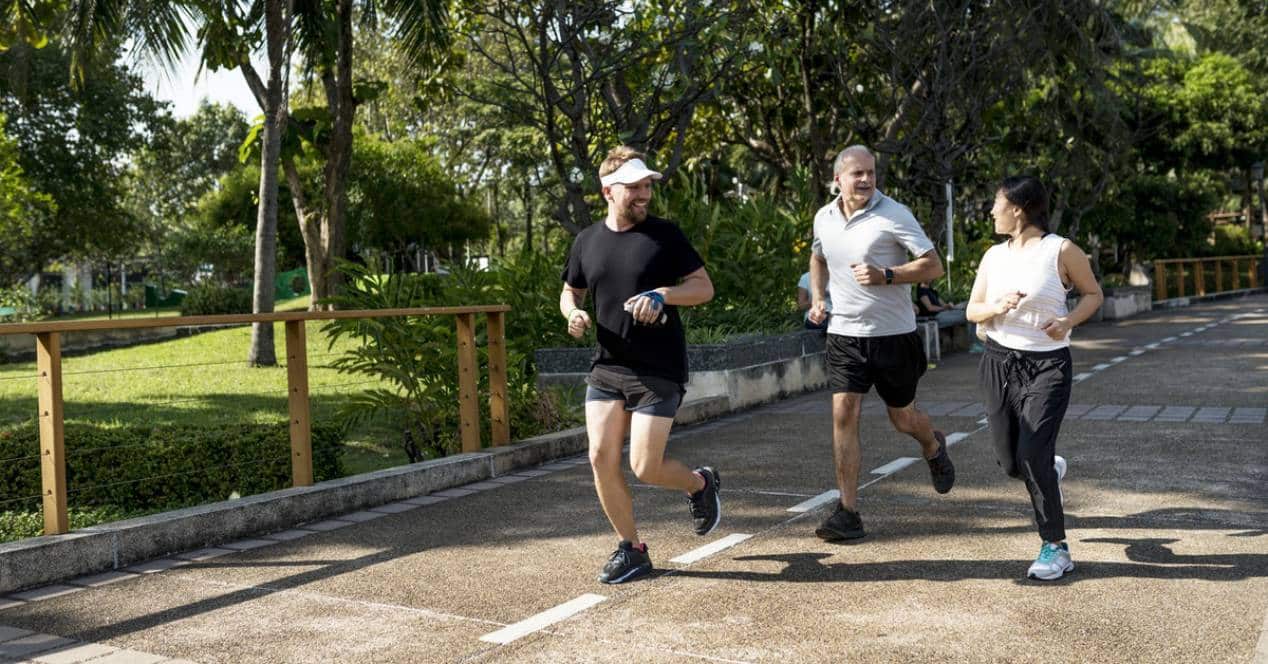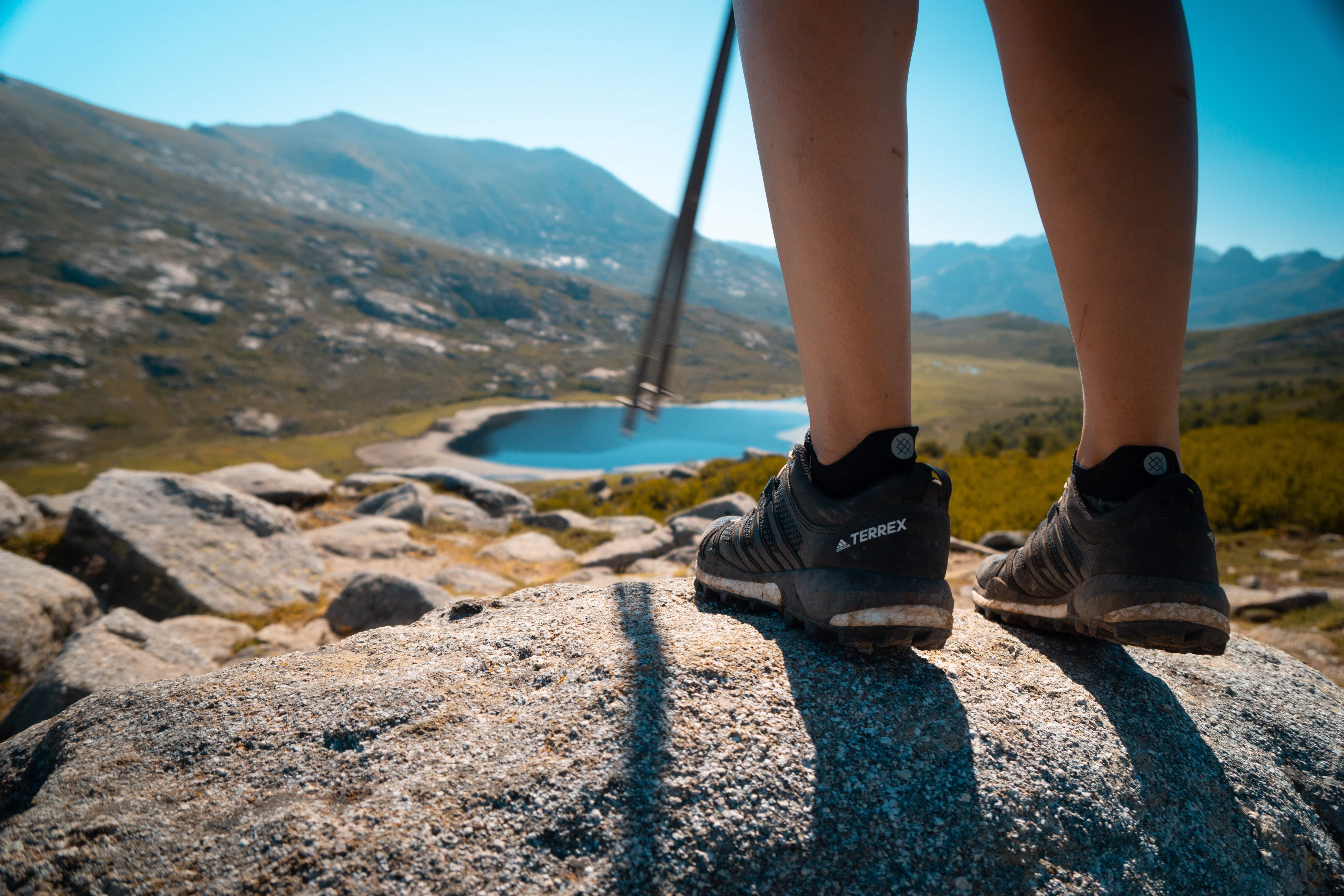
If your lower right leg hurts after running, you may have shin splints, a common injury in runners. Shin splints are inflammation of the muscles, tendons, and tissues in the lower leg.
The tibia bone, a large bone in the lower leg, may also be affected. Shin splints cause pain along or behind the shin. This pain usually occurs after running or possibly the next day.
What are the causes of having shin splints?
Shin splints are especially common in beginning runners who may be training beyond their abilities or may have foot placement errors. Common causes of shin splints in runners are:
- La overpronation or excessive inward turning of the foot during the stride.
- Excess supination or excessive rolling out.
- wear some inappropriate slippers.
- Running too long or at too much intensity. It can even appear from running on hard surfaces.
- Having an minimal flexibility in the ankle joint.
A doctor will diagnose a shin splint by asking how you've been using your muscles, what exercise you've been doing, and the location of the pain. A stress fracture is confirmed by an X-ray, bone scan, MRI, or CT scan.
What treatment is there?
The exact treatment required depends on the severity and cause of the shin splints. If your injury is severe, you may need a rest period, ice and medication to reduce pain and swelling. you may need use crutches and avoid putting weight on the area for a short period of time. In milder cases, you may just need to avoid activities that make your symptoms worse. If there is a structural problem with your feet, orthotics, arch supports, or inserts may be prescribed. Once the symptoms subside, you will need to return to a walking routine very slowly.
Lower leg pain from shin splints can be mild to severe. The most important thing to speed up the healing process is rest your leg. Experts recommend complete rest for at least five days, or longer if you're still in pain. Apply ice packs to the lower leg for 15 minutes at a time and elevate the leg to reduce swelling. Wrap the leg with a compression bandage and use new running shoes, sports orthotics, and inserts to aid the healing process. If self-treatment does not relieve pain, see a doctor.

Can it be prevented?
First, to prevent a running injury such as shin splints from occurring, determine the cause of the injury. Insoles can be helpful for overpronation or excess supination. Experts recommend not increase race distance by more than 10 percent a week so that your muscles do not work too much. Vary your running surfaces occasionally to softer, grassy terrain for better shock absorption, and stretch and warm up your muscles before you run so you don't have tight lower leg muscles.
Your best bet is to take steps to avoid this nuisance while you walk. Visit a sporting goods store and try on several shoes to find the right fit and support for your feet. There are athletic shoes designed specifically for walking or running.
Use good training habits like warm up and stretch lightly before walking or running and freshening up afterwards. In addition, make a strength training routine on the lower legs will help take pressure off the soft tissues so they are less prone to injury. If you are at risk for shin splints, a physical therapist can design an appropriate program based on your general health and walking routine.
It is important that you also avoid walking too far and heeling, as well as walking at a pace that is too fast. Every stride, no matter how fast you move, should involve hip rotation.
How do you know if you have shin splints?
Normally, this type of injury leaves movement of the leg very limited. If you notice that it's not as flexible or strong as the other leg, or if you can't jog, run, and jump without pain, you may have an injury.
Determine the type of pain you have in the lower leg
Shin splint pain can be a dull ache or a sharp, stabbing pain. It can occur in one or both legs and the pain can extend along the entire length of the shin. Median shin splints have pain that can be felt at the inner edge of the shin bone, or tibia, where it joins the calf muscle. Anterior shin splints are felt on the outer front of the shin, and pain can spread to the ankle and foot.
Control your pain while you exercise
The pain will develop as you continue the exercise. If you don't feel pain in your shins at the beginning of your exercise but do as you continue to move, you may have shin splints. The pain can also continue until the day after the exercise.
Engaging in a new, non-impact activity that won't aggravate your shin splints while they heal. If you're a runner, try swimming or an aggressive interval bike program. If your leg cramps do not improve or if they return, it is recommended to see a physical therapist.
Feel your shins to signal your pain
Pain specific to a point along the tibia bone may be a sign of a stress fracture. The pain can be felt when pressing on the tibia and when standing. If you suspect you have a stress fracture, you should see your doctor to confirm it. New stress fractures, which are only 2 to 3 weeks old, do not usually show up on an x-ray and will require a bone scan or MRI for diagnosis.
Stretches to improve shin pain
In addition to the injury prevention tips above, here are some shin splint stretches and exercises you can do to both prevent and treat lower leg pain.
Calf stretch
Sometimes you can feel the first sign of splints in your calves. Running can cause stiff calves, which in turn pull on the front shins or shins. This calf stretch can help loosen those muscles.
- Stand close to a wall, curb, or step.
- With your heel down, lift your toes up the wall or curb at an angle of 45 degrees or more.
- Keep your leg straight, with a slight bend at the knee.
- Add or remove pressure by leaning slightly forward or backward. If you're on a sidewalk, hang your heel over the edge, letting your body weight help with the stretch.
- Hold for 30 seconds on each foot.
the abc
Using your ABC's is a quick way to help stretch your foot and ankle. This can be done preventatively or as shin splints develop. I suggest you do it in the morning. This keeps circulation going, keeps the ankle flexible, and stretches the peroneus, the muscle on the side of the calf that attaches to the ankle.
- Sit or stand and write the alphabet with your foot.
- Use only the foot and ankle, not the entire lower leg.
- Once you've completed the entire alphabet, repeat with the opposite foot.
Resistance Band Stretch
To help keep shin splints at bay, I recommend using resistance bands in your routine. This material primarily works the peroneal muscles and helps build lower leg strength.
- Place a resistance band around both feet.
- Then, using one foot as an anchor, swing the other from side to side like a windshield wiper.
- Try doing this 20 times with one foot before switching to the other.
Foam Roller Massage
Calf tightness causes changes in running gait that can not only lead to shin splints, but also plantar fasciitis. That's why a foam roller session is important after long rides.
You should do a total leg swing session one to three times a week, as long as it's not causing additional pain. By extending your legs, you will help to release the muscles and fascia around the calf.
- Kneel on the roller.
- Roll gently down the front of the shin (anterior tibial).
- Then roll an inch up.
- Do this from the bottom of the knee to the ankle.
Lacrosse Ball Trigger Point Massage
Like foam rolling, using a yoga block and lacrosse ball also helps release tight muscles and fascia to help prevent shin splints. The harder the ball is, the deeper you can go into the muscle belly. Be sure to breathe deeply during this intense exercise.
- Place a trigger point therapy ball, lacrosse ball, or tennis ball on a yoga block and rest your calf muscle on the ball.
- Stretches the calf muscle from the ankle to the knee. Use the same method as with the foam roller.
- Be sure to take a deep breath when you get to any sore spots.
active toe extension
The purpose of active toe extension is to help strengthen the small muscles in your feet and keep them healthy. By working these muscles, you are increasing your balance and strength in your feet, which directly affects your ankles, calves, and shins.
- Stand barefoot on the ground.
- Extend your toes as far as possible before relaxing them.
- Repeat 10 times.